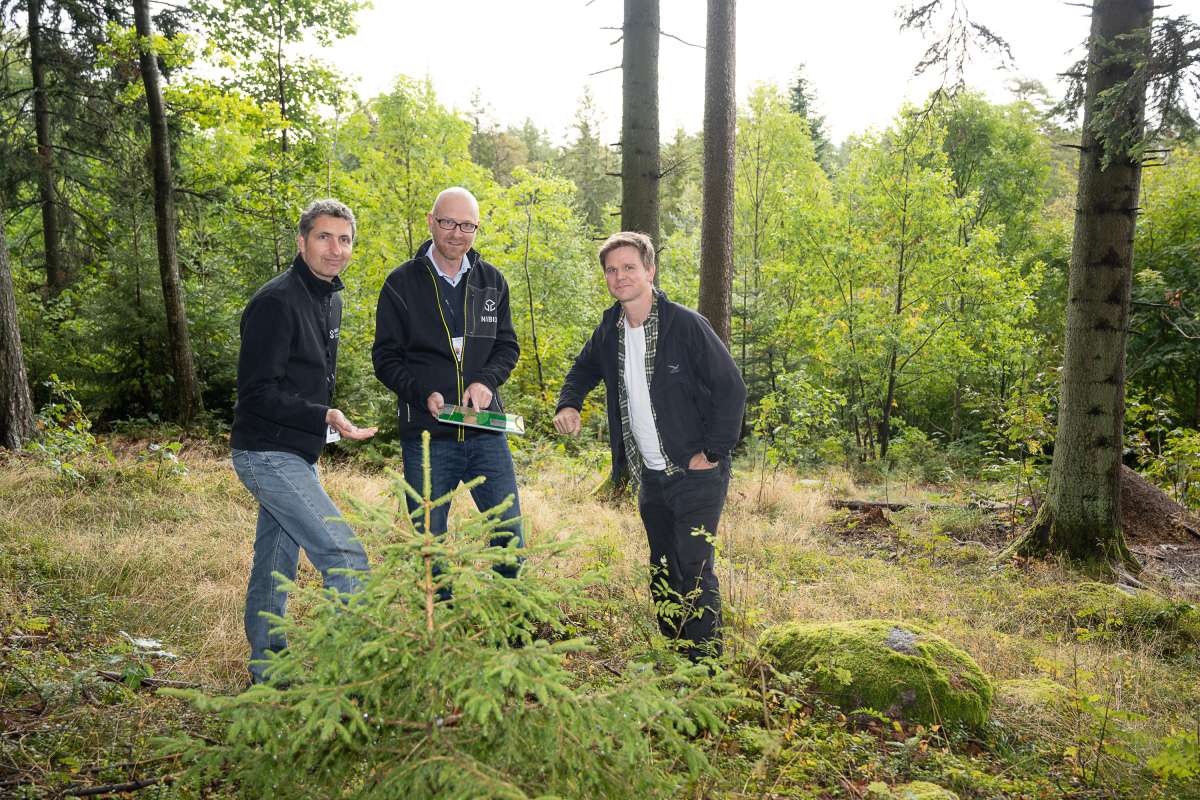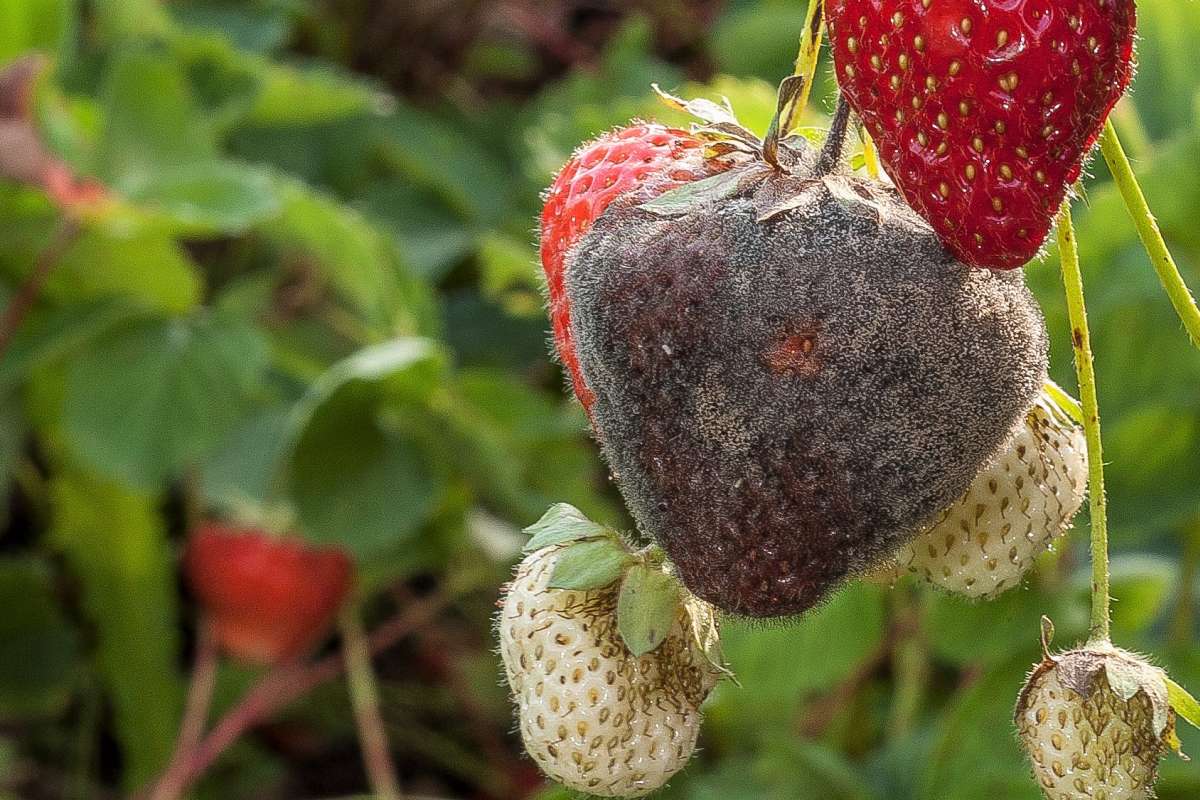Fragrant pest control in forest nurseries
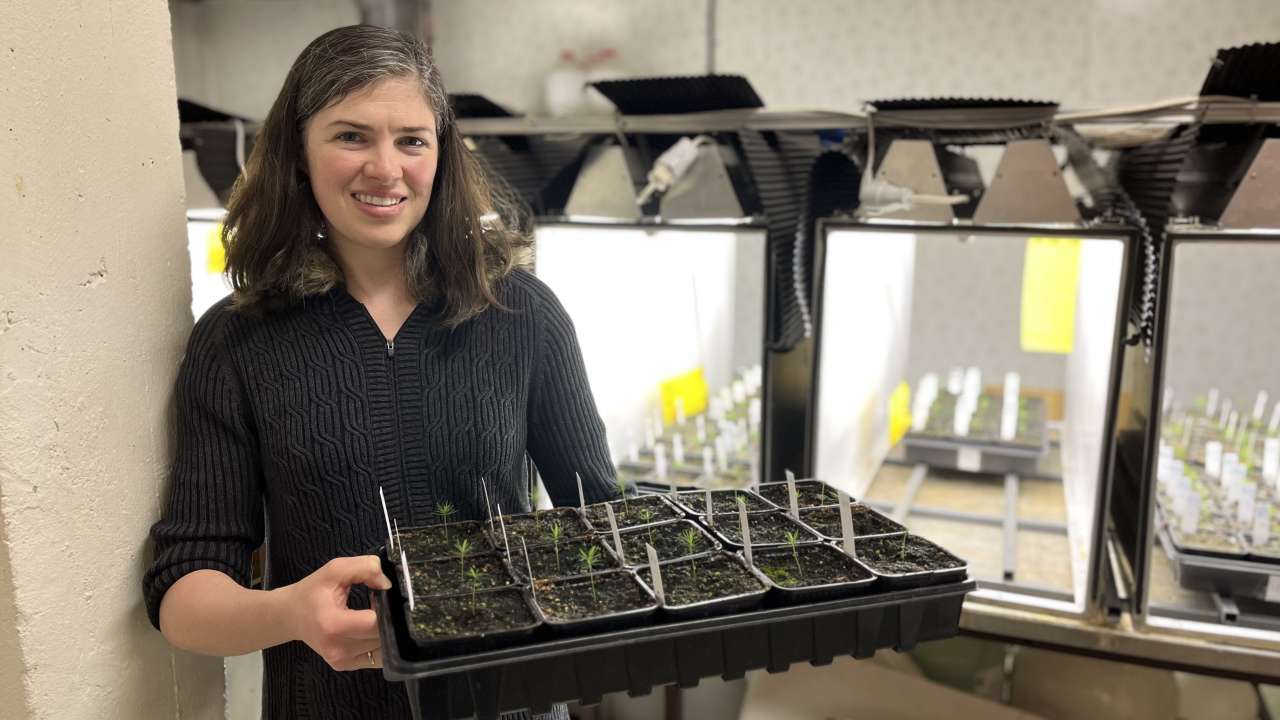
Melissa Magerøy leads a project that aims to investigate alternatives to pesticides in forest nurseries. Photo: Silje Kvist Simonsen.
Every year, 40 million spruce trees are planted in Norway. Forest nurseries rely on pesticides to keep the seedlings healthy. Researchers at NIBIO have teamed up with forest nurseries to find alternatives that can reduce the need for chemical agents. They aim to investigate whether "friendly" bacteria and the tree's own defence mechanisms can be utilized.
For a spruce tree (Picea abies) to live for hundreds of years, it needs to be able to defend itself. The defence of the spruce can be divided into two parts: a standing defence that is always active, such as bark and resin, and an induced defence that is activated when the spruce is under attack. Researchers at NIBIO have been interested in this for several years, studying defence mechanisms closely. Now they want to find out if we can use this well-developed defence in our own production of spruce seedlings.
Preparing the tree for attack
A crucial part of the spruce's induced defence is the plant hormone methyl jasmonate.
"When a spruce tree is under attack and has activated its induced defence, it releases methyl jasmonate. This is a substance that trees can use to communicate with each other, serving as a warning to other trees that danger is imminent," explains NIBIO researcher Melissa Magerøy.
"A tree that detects methyl jasmonate is prompted to prepare its own defence. If the tree is then attacked, it can react quickly and activate its entire defence. Thus, the tree becomes more resilient to diseases and pests," Magerøy elaborates.
It is this mechanism that researchers now want to exploit to create more resilient plants. While the mechanism has been studied for many years, Magerøy has been given the opportunity to put theory into practice. In collaboration with a Norwegian forest nursery, Skogplanter Innlandet, she is leading a project that will treat both seeds and seedlings with, among other things, methyl jasmonate. The goal is to prepare the plants’ defence and thus make them more resilient. If this is successful, it could reduce the need for pesticides in forest nurseries.

Gray mould is problematic
Every year, 40 million spruce trees are planted in Norway. In forest nurseries, seedlings grow closely together before being planted out, making it easy for diseases to spread from one plant to another. The fungus gray mould is particularly problematic.
"Gray mould is found truly everywhere," says NIBIO researcher Kathrine Nielsen, who wrote her PhD thesis on the fungus.
"An attack of gray mould can be fatal for a small spruce seedling."
Gray mould can for instance be established when the plants are prepared for winter storage. The plants are then stored closely at low temperatures, and the fungus survives in a dormant state. When temperatures rise again in the spring, the fungus flourishes.
"What's most problematic about gray mould, however, is that it can easily develop resistance to fungicides. More and more fungicides are being removed from the market, and without new ones, the variation in fungicide use is reduced. This increases the chances of the fungus developing resistance," Nielsen further explains.
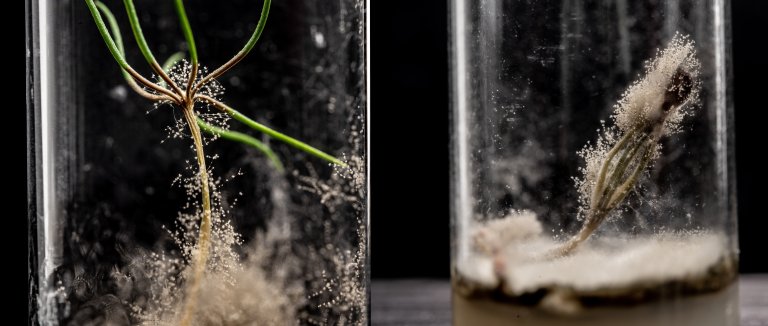
Fragrant pest control
Forest nurseries rely on pesticides to keep diseases and pests under control. In addition to the risk of resistance development, this use poses a risk to human health and the environment.
"Therefore, forest nurseries need good alternative methods," emphasizes Magerøy.
She hopes that methyl jasmonate can be one such alternative.
"Not only is the substance harmless to humans and the environment, but it also smells good, like jasmine flowers," the researcher smiles.
In addition to methyl jasmonate, the researchers will investigate whether "friendly" bacteria can promote the health of spruce seedlings. These are bacteria that naturally live in the soil around the spruce and have important functions.
"The bacteria can directly inhibit disease organisms, or they can produce substances that stimulate the spruce's own defence. In addition, they help the plant extract nutrients from the soil," explains Tage Thorstensen. He is a researcher at NIBIO and co-owner of the company AgriBiotix AS, which works to develop products for the biological control of plant diseases.
Thorstensen refers to preliminary results with "friendly" bacteria, showing that these have great potential in pest control.
"Based on previous experiments, we have great faith that the combination of methyl jasmonate and "friendly" bacteria will work well to combat gray mould," he concludes.
Solving relevant problems
In the project, researchers collaborate closely with the industry to solve concrete and relevant problems.
"This project is not about understanding each defence mechanism down to the smallest detail. It's about looking at the interaction between different factors and coming up with solutions to real problems in forest nurseries," explains Magerøy.
"It will be important to see to what extent the activation of the spruce's defence affects the growth of the plants. Activating a defence requires energy, energy that could otherwise be used for growth. We have already seen that seeds treated with methyl jasmonate have slightly reduced growth in the first year, but that growth picks up again the following year.
"Another thing we need to investigate is whether, by activating its defence, the spruce will also inhibit the "friendly" bacteria."
"We need to consider all these trade-offs to create solutions that forest nurseries will want to use," the researcher concludes.
Contacts


MeJBakSkog
The MeJBakSkog project is a collaboration between researchers at NIBIO, AgriBiotix AS, and Skogplanter Innlandet. The project, funded by the Norwegian Agriculture Agency, aims to investigate whether the use of methyl jasmonate and "friendly" bacteria in forest nurseries can reduce the use of chemical pesticides.
The project started in March 2024 and will run until December 2025.
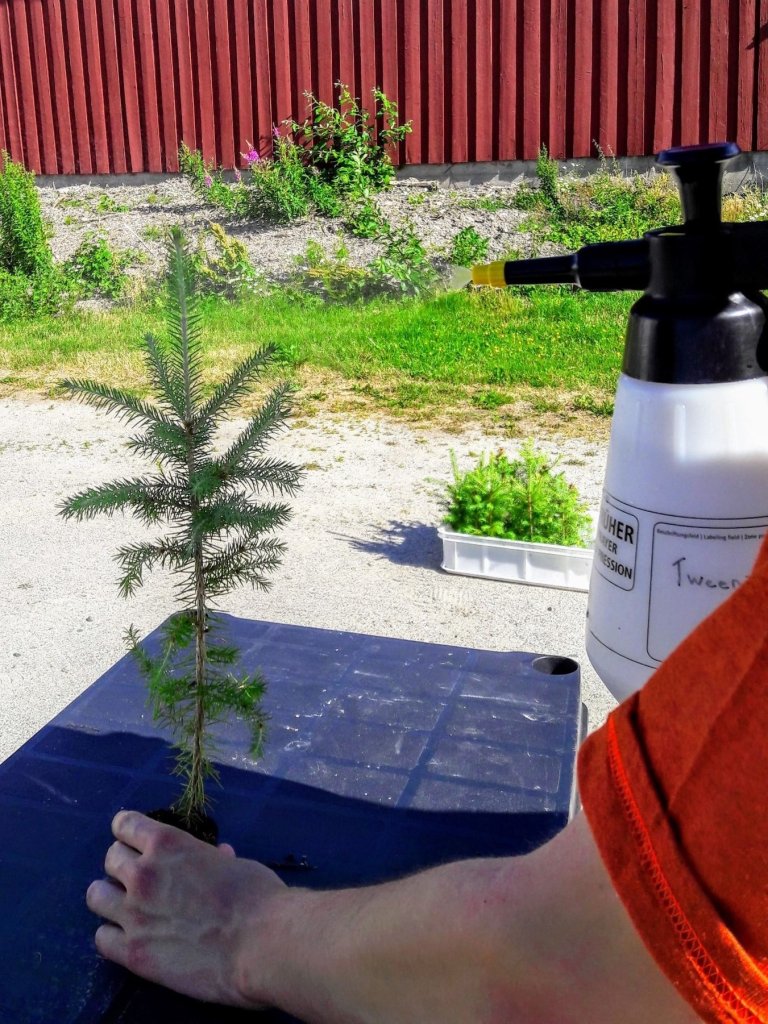

Contacts



